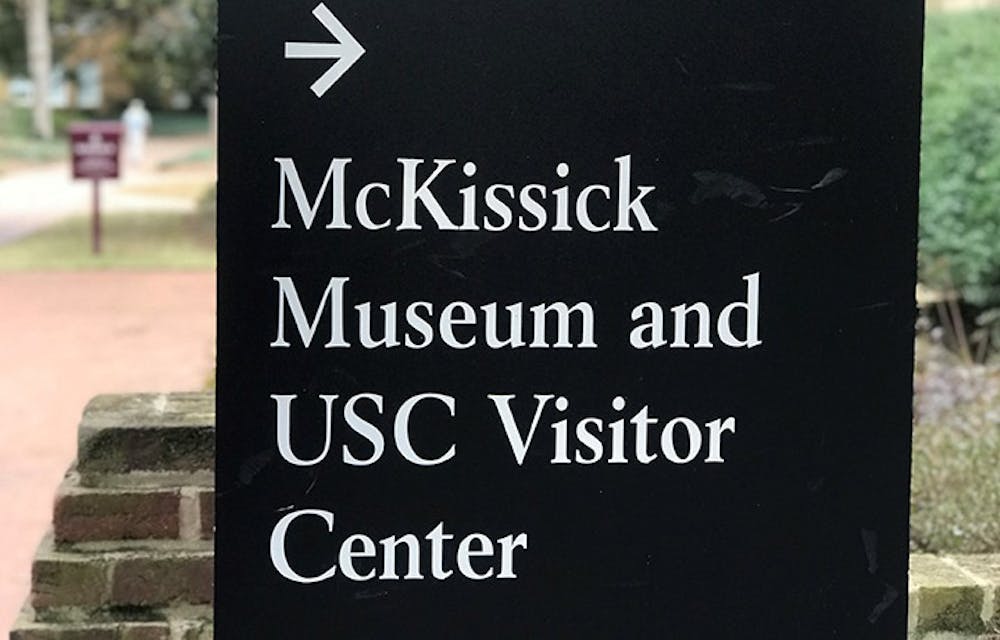Through June 15, McKissick Museum is displaying its "Child's Play" exhibition, which features everything from Barbies to 18th century toys. Project creator Leslie Yarborough brings forgotten artifacts and toys to life and reminds audiences what "play" means to our identities, social norms and interactions.
“Leslie was a really excellent student who was extremely conscientious and went above and beyond," Lana Burgess, the McKissick faculty curator, said. "She took the initiative to teach herself Photoshop and Adobe Suite, so she could not only come up with the content idea or the main themes of the exhibit, but then also the design how she wanted it to look installed in the gallery.”
Yarborough has been working on her master of library science, along with the museum management certification, and at the same time culminating the graphic identity and design of "Child's Play," Burgess said.
Exhibition curator Giordano Angeletti has brought toys from Star Wars and LEGO collections and even those dating as far back as the 18th century. Angeletti said he hoped "Child's Play" would not only serve as a reminder and help people find solace, but also be something to reflect on.
"We have a lot of stress at the moment, so playing can allow us to socialize, which acts as a stress relief," Angeletti said.
Angeletti said this exhibition was not his “usual cup of tea,” even though he grew up immersed in art history.
Working with objects that “aren’t strictly art,” he, with the help of Elif Karsli, assistant professor of early childhood mathematics education, conducted lots of research, Angeletti said.
"There’s something very basic and biological about play," Angeletti said. "I liked the idea of showing something a little bit more lighthearted."
During the preparation of the exhibit, Angeletti and Karsli modified the presentation in order to communicate how play works and how toys influence play. Angeletti said the two objectives of the exhibition are nostalgia and modern-day interpretation.
"The nostalgia as grownups, as people who don’t play as much anymore, seeing those toys you might have wanted when you were a child or toys that you might have had is one element that definitely brings a smile and brings a light-hearted, melancholic aspect to the exhibition," Angeletti said. "Then there's the text panels that help us interpret some of the toys and help us think a bit further than just nostalgia."
"Child's Play" is one of five physical exhibits on display, alongside "Invitation to Explore," "Natural Curiosity: The University of South Carolina and the Evolution of Scientific Inquiry in the Natural World," "Piece by Piece: Quilts from the Permanent Collection" and "Resilience, Reflection, Rebuilding: Students Respond to COVID-19." Burgess said the McKissick is “Columbia’s best-kept secret, and that’s too darn bad.”
Being able to build on Yarboroughs' work was special for the McKissick team, Amanda Belue, communications manager at the museum, said.
There was a lot of staff involved in this exhibition, Belue said. This group effort, which had Mark Smith, curator of collections, work together with Yarborough in identifying objects in the collection, has evolved into a spectacle that all of Columbia can come and appreciate.
"Obviously, people are not very inclined to go out to the museum because of COVID," Angeletti said.
The museum is open for walk-ins, and COVID-19 protocols are being followed, Angeletti said. There is also an option for a selection of digital exhibitions on the website, where visitors can enjoy and see how toys or objects that were meant to be touched and used would have worked, according to Angeletti.
Burgess said to utilize this underused opportunity, and Belue said individuals who cannot make it in-person should take a look at the things used in everyday life and imagine it being displayed through a museum lens.
"What value can you give that?" Belue said.
The exhibition is open until June 15. McKissick Museum is open 8:30 a.m. to 5 p.m. Monday through Friday, 11 a.m. to 3 p.m. on Saturday and closed Sundays.

